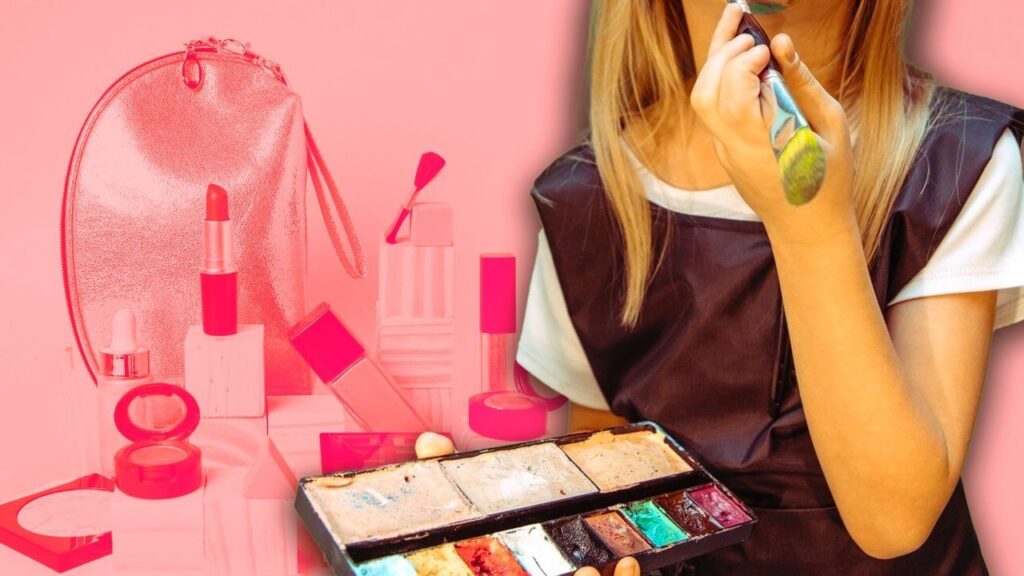The skincare trend so prevalent on social media has caught on with under-12s who create their own content by reviewing cosmetics on TikTok.
In recent times, skincare has become almost compulsive: hyaluronic acid serum, Vitamin C, essences, tonics, exfoliants, retinol… The skincare phenomenon has spread through all layers of society, reaching even the youngest: girls under the age of 12, who have become consumers of facial care, make-up, and beauty products. They are known as “Sephora Kids” – in allusion to the famous cosmetics shop – and are trending on social media, especially Tik Tok.
The risk of falling into “cosmetorexia”
Children emulate older children, so the use of make-up and cosmetics as part of a game of curiosity, exploration and imitation is commonplace. Sephora Kids” is not about play. Beyond minors accessing content from adult influencers showing their grooming routines, it is the 12-year-olds themselves who are the protagonists of these: viral videos where girls take cosmetic shop shelves by storm, reviewing products and showing how to use them.
The incorporation of skin care routines and the use of products that exceed the needs of these girls can lead to dermatological problems. “The indiscriminate exposure to certain active ingredients, which are common in anti-ageing products, but inappropriate for the younger public, such as retinol and alpha hydroxy acids, can cause harmful effects in the long term”, say the Idermic medical centre.. In the more imminent period, experts say the problems with using “products that contain endocrine disruptors or are too occlusive for acne-prone skin is that they can exacerbate existing dermatological problems”.
The OCU points out that the risk of this practice is not only in how the composition of these products may affect their skins, which are at a time of growth, but also in the risk of falling into “cosmetorexia”, a concept that is increasingly being talked about by experts. Idermic defines it as the obsession with acquiring and using a variety of cosmetic products, which is driven by “a constant search for aesthetic perfection fuelled by unrealistic images promoted on social networks and other media”.
For Conchita Sisí, director of the Salud en Mente clinic, the key trigger is the overexposure of minors to social networks: “the rampant consumption of this type of content facilitates the creation of beauty ideals by young girls, which leads them to follow skincare and make-up routines that are not appropriate for their age”.
Restricting children’s access to networks in the spotlight
Although the registration age for TikTok and Instagram is 13 and 14 years respectively, a quick glance at the platforms shows that the protagonists of the “Sephora Kids” trend are mostly under 12 years old. In some cases, it is the parents themselves who facilitate their children’s access to the networks, or even encourage them to do so through sharenting – a concept that refers to the practice of parents actively posting on social networks about their children.
Beyond the commodification of childhood by parents themselves – see the cases of child toy influencers – an investigation by The Guardian has shown that children under the age of 13 can easily bypass access protocols and create an account on TikTok. Not only that, but it won’t get shut down: the trick is as simple as marking that it is being managed by their parents.
Ban or regulate?
When it comes to the purchase of cosmetics, European countries such as Sweden are already placing age restrictions on the sale of their products. To discourage child consumption, the plan is to try to control movements and prevent premature use of this type of product. On social networks, the European Digital Services Regulation requires platforms to be guarantors of various elements of minors, including “mental well-being”. However, TikTok has had several run-ins with regulators, one of them at the end of 2023 when the EU fined it 345 million for breaching the law on children’s data. With regard to the daily use of social networks by minors, the debate tends to focus on the usual dilemma: prohibit or regulate? sychologist Conchita Sisí advocates “continuous work with parents”. In other words, although the prohibition line may seem the simplest for adults in the first instance, the solution should be aimed at “reorienting their use, careful attention and parental control in a positive way over the use of social networks”.



